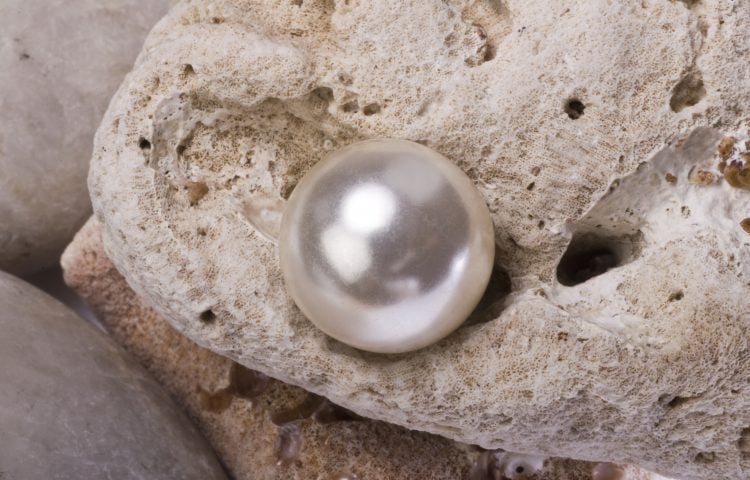When we think of pearls, we often imagine pristine white orbs of beauty. Yet, South Sea pearls elevate our expectations, dazzling with their grandeur, opulence, and unique attributes. Their size, luster, and distinct quality set them apart. In the realm of pearls, understanding South Sea pearl value is a captivating journey through the depths of the ocean.
The Elegance of South Sea Cultured Pearls
South Sea pearls stand as a testament to the wonders of the deep blue sea. These treasures are celebrated for their remarkable size and natural luster. Unlike their counterparts, South Sea pearls are cultivated in unique oyster beds that exist in few locations globally. The journey to understand the value of South Sea pearls is a voyage through the waters where these gems are born.
The Pinnacle of Size and Luster
To grasp the essence of South Sea pearl value, it’s vital to appreciate the core qualities that set these pearls apart. A distinctive feature of South Sea pearls is their size. Unlike other cultured pearls, South Sea pearls experience a prolonged gestation period, typically spanning from 2 to 4 years. It’s during this time that these pearls amass a significant amount of nacre, resulting in their larger size and unparalleled luster.
However, the very factors that contribute to their size and luster also amplify their exclusivity and, subsequently, their value. This correlation between attributes and scarcity raises an essential question: What makes South Sea pearls so valuable?

The Precious Scarcity of South Sea Pearls
South Sea pearls are predominantly cultivated off the coast of Australia. Attempts to establish new oyster beds or relocate existing ones have proven futile. This restricted geographic presence inevitably leads to their scarcity, contributing to their elevated value.
While the rarity of South Sea pearls is inherently valuable, it’s crucial to understand that their extended development cycle brings with it an increased likelihood of imperfections. The same period that results in larger pearls allows more time for potential flaws to emerge. Consequently, the number of well-shaped South Sea pearls is relatively low, intensifying their desirability.
Evaluating the Value of South Sea Cultured Pearls
To determine the worth of South Sea cultured pearls, it’s imperative to consider and assess a range of quality criteria. While there are seven categories for evaluating all pearls, the following five are paramount when grading South Sea cultured pearls:

Luster: The Radiant Glow of Opulence
The first element to contemplate is the luster of these pearls. Luster refers to the degree of light reflection and refraction on the pearl’s surface. In simpler terms, a pearl with high luster should reflect your face when you gaze upon it, casting a warm and radiant glow. South Sea cultured pearls are renowned for their exceptional luster, owing to their extensive nacre. It’s this abundance of nacre that creates a luminous and radiant gem.
Shape: The Quest for Sphericity
A critical aspect of a pearl’s value is its shape. Spherical pearls are the most valuable among all pearl shapes. Any deviation from this perfect roundness places a pearl in the baroque category, which encompasses a variety of non-spherical forms. Only a small percentage of pearls achieve the coveted spherical shape, making it a primary determinant of value.
Size: A Matter of Significance
While the size of a pearl does factor into its evaluation, its weight is amplified when the other grading parameters are uniformly exceptional. For size to significantly influence value, the pearl should already meet high standards in terms of shape, color, luster, and surface quality. South Sea pearls tend to be larger due to their protracted cultivation period.
Color: A Spectrum of Elegance
The color of a South Sea cultured pearl plays a pivotal role in its value. A pearl’s color is composed of two tones: the inner color and the outer overlaying hue. This interplay between tones contributes to the pearl’s depth and warmth. To attain a high-grade classification, the pearl’s color must exhibit uniformity across its entire surface.
Surface Quality: Pursuit of Perfection
The surface quality of a pearl is another key factor in its overall assessment. While minor imperfections can exist even in the most valuable pearls, discerning buyers often seek pearls with surfaces that are as close to perfection as possible. A high-value pearl should be free from pits, wrinkles, or cracks, ensuring an unblemished surface.
Deciphering the True South Sea Pearl Value
By adhering to these criteria, one can confidently assess the value of a South Sea cultured pearl. Armed with this knowledge, informed buyers can make astute choices and select pearls that align with their preferences and budget.
In the world of pearls, South Sea cultured pearls shine as a true embodiment of grandeur. Their size, luster, and natural beauty continue to captivate the hearts of those who appreciate the finest pearls.
Exploring South Sea Pearl Value Further
When delving into the depths of South Sea pearl value, it becomes evident that these treasures are not mere gems but expressions of natural splendor. The allure of South Sea
Find out more about the different pearl qualities from our video below!
FAQs
The value of South Sea pearls is primarily determined by factors such as size, luster, shape, color, and surface quality. Larger pearls with high luster, a spherical shape, uniform color, and flawless surfaces tend to be more valuable.
South Sea pearls are highly regarded due to their remarkable size, luster, and natural beauty. They are among the largest commercially harvested pearls globally and are known for their radiant, deep gold color.
South Sea pearls have a longer development cycle of 2-4 years, which allows them to accumulate thicker layers of nacre, resulting in larger and more lustrous pearls. This extended development period contributes to their higher value.
Absolutely, South Sea pearls are often used to create heirloom-quality jewelry. Their timeless beauty and high value make them ideal for passing down as treasured pieces for future generations.

